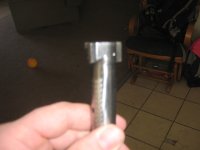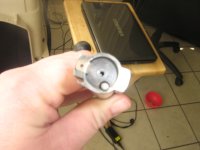MAUSER did it right
And the CRF being talked about is the classic Mauser system. Snapping the extractor over the rim of the case (by closing the bolt) does not harm the gun IF IT IS BUILT TO DO THAT. Meaning there is a relief cut for the extractor to move into as it snaps over, and the extractor is bevel cut to make it easier. Not all CRF rifles were made to allow that. Some Mausers aren't made that way, some are. The 1903 Springfield, with its magazine cutoff is made to allow single loading, closing the bolt on a hand chambered round.
Other rifles can have the extractor damaged by doing that. If there is any doubt, ALWAYS feed from the magazine, and all will be well.
Push round feed is not as fragile a thing as it sounds like. Virtually all autoloading rifles use a push feed concept, and it works there pretty well. It works on bolt guns pretty well too. CRF is more rugged and more durable, but for 99% of US hunting and sporting use, push feed is quite adequate.
CRF got its demand from African hunting, where many a PH was sceptical of the push feed rifles when they were introduced to them. Of course, there were also PHs that didn't trust the new fangled magazine rifles and stuck with their proven doubles.
Because it has to work, every time, no matter how you screw it up, CRF is widely considered the only acceptable system on bolt action dangerous game rifles.
Entire books have been written on Model 70 variations, its been around for just a little while now.



